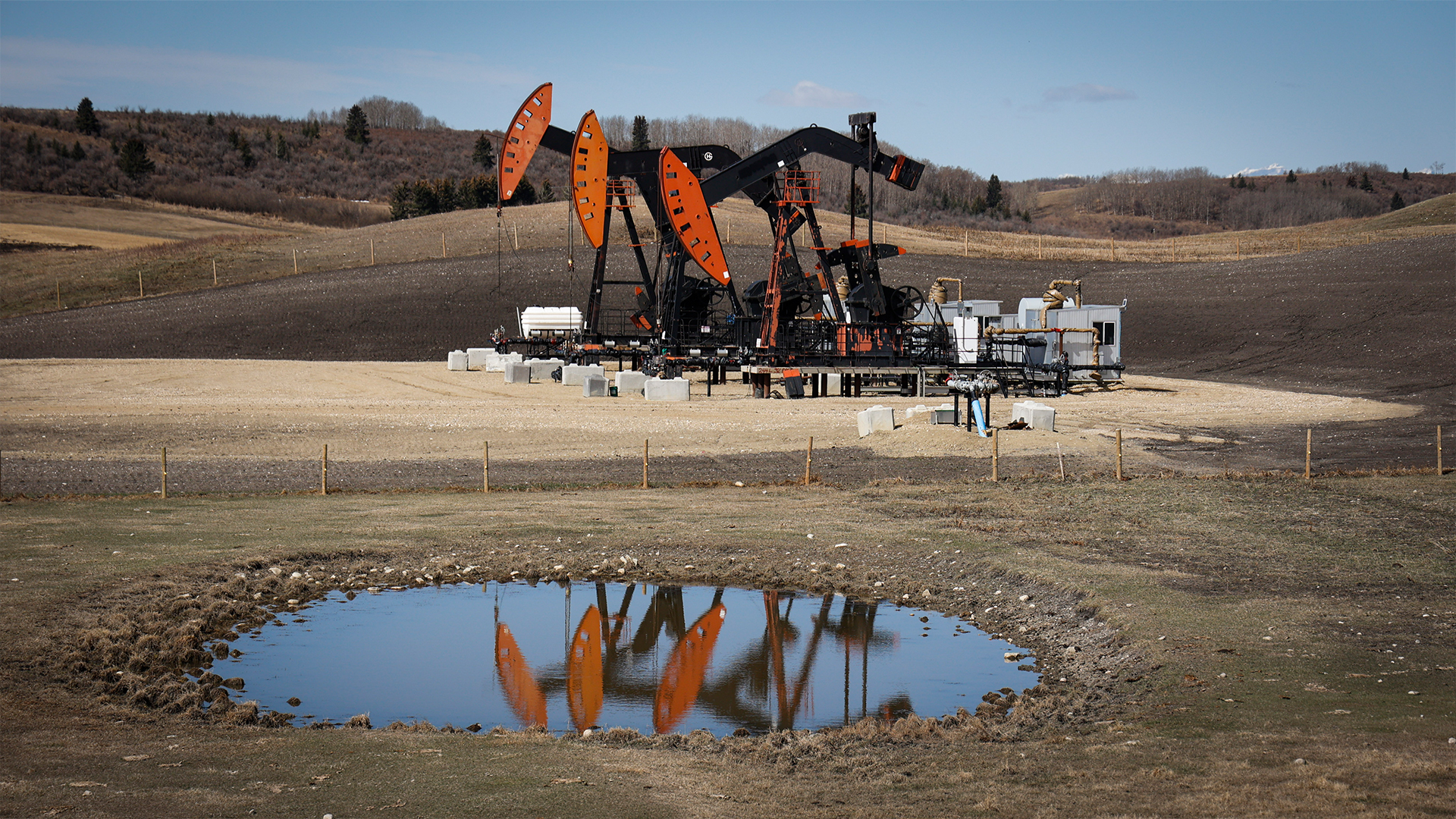
This is the second article in a series of three on Canada’s climate objectives and the oil and gas sector. The first article can be found here.
Federal commitments to phase out subsidies and other public financing for fossil fuels are on a collision course with its plans to cap oil and gas emissions, and to support sustainable jobs.
Despite progress in reducing some support for fossil fuel production, federal financing for emission reduction projects such as carbon capture, utilization and storage (CCUS) is growing. The federal tax credit for CCUS is expected to cost between $1 billion and $2 billion per year by 2027. The oil and gas sector could also secure public funds through the $15-billion Canada Growth Fund or other programs.
Disagreements around the precise definitions of “subsidy” and “inefficient” continue to paralyze the debate in Canada, particularly whether such support for emission reduction projects counts as a fossil fuel subsidy or does not. But the more important question is whether it makes sense for the federal government to allocate scarce financial resources to help oil and gas companies reduce emissions. As with most policy questions, the answer is: it depends.
Proponents argue that government investments are needed to help the sector meet the forthcoming cap on oil and gas emissions and provide “sustainable jobs” on the pathway to net-zero in 2050.
Yet a recent analysis from the Canada Energy Regulator highlights that Canada will not be in the driver’s seat for the transition. Global demand for oil and gas could drop dramatically depending on the pace of global climate action, the costs of emission reduction technologies, and export infrastructure.
Does it make sense to spend billions of taxpayer dollars to reduce emissions when Canadian production could be curtailed naturally by market forces?
The federal government needs a transparent and rigorous framework to evaluate public spending on emission reduction projects in the sector. While there are significant risks for both climate and the economy associated with providing any level of support to fossil fuel activities, there is a case for providing some – targeted and temporary – support.
Drawing on a 2022 paper from the Canadian Climate Institute, we propose a four-part analytical framework that federal departments, Crown corporations and arms-length institutions should use before committing financial support to help oil and gas projects reduce their emissions:
1. Consistency of the company and the project with domestic and international net-zero emission scenarios
When federal organizations consider investments in an emission reduction project at an oil and gas production facility, they should have a reasonable expectation that the asset will not be stranded because of policy or market change.
They should also consider the extent to which financial support could prolong the lifespan of oil and gas facilities, and therefore make it harder to achieve the country’s climate targets as well as impose added costs elsewhere in the economy.
Canada’s recently developed a climate investment taxonomy that is designed to help private investors identify which projects have low transition risk and to provide parameters that could be a basis for federal decision-making.
At a company level, this could limit public support to companies that follow international best practices in net-zero target-setting (including all lifecycle emissions), transition planning, and disclosure. At a project level, it could limit support to existing projects that will result in transformational emissions reductions while checking any possibility of expansion.
The proposed climate investment taxonomy provides a good starting point for federal public investment since it is both consistent with federal and international climate goals, and a sound investment strategy. Cementing this initiative quickly is also critical to mobilizing private dollars to reduce emissions in Canada’s oil and gas sector.
2. The expected economic value of the project relative to alternative funding options
Calls for public investment in oil and gas emission-reduction projects often invoke concerns about competitiveness, the value of the company or project to the economy, and the risk that investment or production will go elsewhere. These arguments warrant closer scrutiny.
The long-term value of the sector to Canada’s economy is uncertain and the importance of developing new sources of economic growth and export will increase over time.
The oil and gas sector currently occupies an important segment of Canada’s economy, generating around five per cent of GDP. However, with 80 per cent of oil and 48 per cent of natural gas exported to markets abroad, oil and gas production in Canada is vulnerable to the pace and scale of the inevitable decline in demand over the course of this century.
Evidence also suggests that federal climate policies are not an existential threat to the sector. Recent analysis shows that adding carbon capture and storage to an oil sands facility could have a minimal impact on facility costs with existing tax credits and long-term certainty on the carbon price.
If these projects can get built, there is little risk of facility closure from emission reduction costs, especially considering the anticipated flexibility in the oil and gas emissions cap and relatively buoyant oil price projections to 2030.
Low-emission production will be the cost of doing business in the coming decades, particularly as climate-focused trade measures, such as carbon border adjustments, expand. Private investors in new projects, including liquefied natural gas, should factor those costs into their assessment of project economics rather than rely on additional government financing, beyond existing tax credits, to achieve compliance.
Meanwhile, opportunities are growing in other markets such as renewable energy, hydrogen and critical minerals. The economic value of an investment in oil and gas should therefore be carefully weighed against the value of alternative investments, particularly given constrained public budgets.
There may, however, be a limited rationale for public investment in specific types of projects where global demand is expected to grow or where benefits might spill over across multiple sectors.
For example, supporting certain blue hydrogen projects – where hydrogen is produced from natural gas and a high percentage of emissions (e.g., above 90 per cent) are captured and stored underground – may be justified by the economic opportunities generated in certain regions. Supporting critical infrastructure for low-carbon projects, such as CO2 pipelines and sequestration facilities, could also benefit other industry sectors in addition to oil and gas.
Projects should undergo a cost-benefit analysis that evaluates the resilience of the facility to market forces over the coming decades. Lower-cost, lower-emission facilities are likely to be more competitive and more resilient.
3. How the project will affect worker and community vulnerability
Preserving jobs is another common rationale for putting public funds into reducing emissions in the sector. Communities in British Columbia, Alberta, Saskatchewan, and Newfoundland and Labrador benefit from substantial employment due to work at oil and gas facilities.
If those facilities face financial challenges due to declining prices linked to decreased global demand, governments will act to preserve employment and support the communities.
Government support can help companies weather a temporary economic shock, such as the drop in oil prices in 2020 at the beginning of the COVID-19 pandemic. The low-carbon transition, however, is not a temporary shock. It is a permanent structural change to the economy that will only grow greater over time.
In this context, short-term employment benefits should be weighed against the risk of delaying an inevitable economic transformation. Investment will bolster community resilience only if it transforms the facility to a state where it is transition-consistent.
Governments should also assess the extent to which communities are vulnerable to sectorial job loss. In a 2021 report by the Canadian Climate Institute, communities were determined to be highly dependent on a particular sector if it accounted for more than 10 per cent of direct employment in the area. Using this type of indicator can help determine where targeted and temporary supports could generate large regional or community employment benefits.
However, the best action may not be to support the existing facility or project if there are opportunities to attract new and sustainable sources of economic growth and job-creation.
4. The suitability of the policy tool to the level of risk associated with the project
Public investment in a project is akin to making a bet that the public benefits of the project – in terms of economic activity, employment, and emission reductions – will outweigh the costs. In the face of uncertainty, governments can limit the risk of making the wrong bet by combining lower-risk projects with lower-risk policy instruments.
The 2023 federal budget provided a helpful hierarchy for how government should think about different public investment tools.
The bottom of the hierarchy includes broad-based instruments that embody relatively lower risk exposure for taxpayers. This includes contracts for differences – alongside carbon pricing and regulations – where governments sign a contract with a company investing in an emission reduction project.
The contract commits governments to compensating companies which experience financial losses associated with a future deviation from the official carbon price trajectory. These contracts should carry a low risk of making the wrong bet in the sense that they reinforce carbon pricing. The challenge is to make them widely available so that all types of projects or companies have access.
On the top of the hierarchy are instruments that run the greatest risk, where governments could make the wrong bet. These bespoke instruments, such as the Strategic Innovation Fund or the Volkswagen investment, have the greatest government discretion, with flawed or incomplete information on the company, project and market. The risk is compounded when public investments are large.
Sandwiched between the pyramid’s two extremes are investment tax credits, such as the carbon capture and storage tax credit, and “strategic finance” such as the $15 billion Canada Growth Fund that is managed by the Public Service Pensions (PSP) Investment Board.
The transition risk associated with oil and gas projects – due to uncertain future global demand – magnifies the risk that governments will make the wrong bet. Figure 1 below provides an illustration of the interaction between instrument risk (making the wrong bet) and project risk (whether anticipated economic, employment and emission-reduction benefits are realized).
As the federal government develops its framework for fossil fuel subsidies and finance, it should aim to phase out and avoid any high-risk public spending. Medium-risk spending should also undergo substantial scrutiny.
The bottom line
The government’s approach to financial support for emission reduction projects in the oil and gas sector should place the burden of proof on the company and the specific project, with all supporting analysis made publicly available.
Oil and gas companies should be expected to provide evidence that the project will generate long-term public benefits through continued economic activity, emission reductions and employment, and that existing policy tools are inadequate.
The policy tools used to provide support should also be tailored to the level of transition risk facing the company and project. Governments should not be placing risky bets on projects that may fail to deliver the public benefits promised.
The federal government’s proposed framework can help decision-makers direct public support to the lowest-risk, highest reward projects. It can also help guide public spending on clean growth projects, such as those in renewable electricity, low-carbon hydrogen, or batteries and storage.
When 2050 comes and Canadians evaluate how governments supported the transition to net-zero, they will not focus on the technical definitions of what is, and what is not, a subsidy.
What will matter are the outcomes and whether the public is confident that successive governments made the soundest decisions possible. That requires a transparent analytical framework and rigorous evaluation of alternatives. This should be combined with the ongoing evaluation of large investments to determine if the public benefits which were promised were ultimately achieved.
Also in the series:
Defining fossil fuel projects by climate impact is critical
Cash-flow modeling shows carbon capture and storage can help meet climate goals










